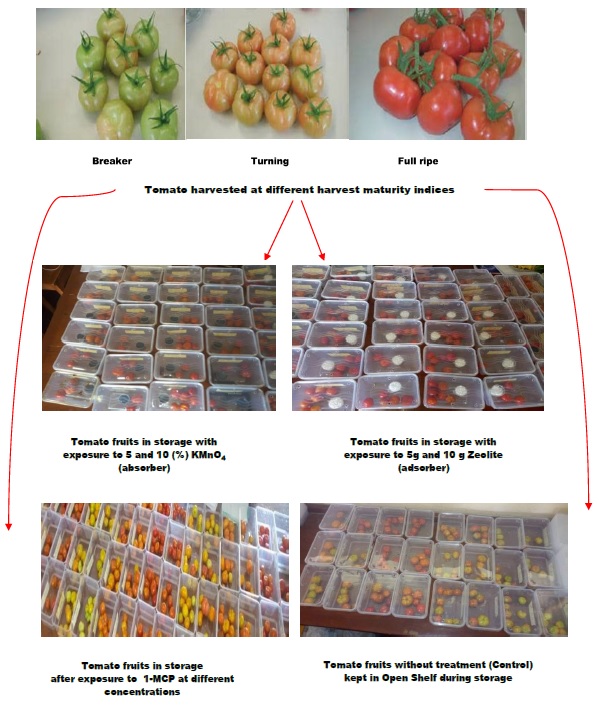Effect of harvest maturity stage and ripening remediation agents on the shelf life and biochemical quality attributes of tomato (Solanum lycopersicon) fruits

Published 2022-09-01
Keywords
- 1-MCP,
- KMnO4,
- postharvest,
- RRA,
- Zeolite
How to Cite
Copyright (c) 2022 Adebusola Oduntan, Oyeboade Oyetunde, Bolatito Shobo, Goke Bodunde

This work is licensed under a Creative Commons Attribution 4.0 International License.
Abstract
Tomato fruit is highly perishable because of the characteristic high rate of ethylene production and respiration during ripening. Delayed ripening could be achieved through the use of ripening remediation agents (RRa) that either absorb or block ethylene binding to the fruit receptor. The effects of ripening remediation agents on shelf life and biochemical quality attributes were evaluated on tomato fruits harvested at three maturity stages (breaker, turning and full-ripe). In 2018 and 2019, harvested fruits were stored under seven ripening remediation treatments: 0.1 µL/L 1-MCP, 0.3 µL/L 1-MCP, 0.5 µL/L 1-MCP, 5% KMnO4, 10% KMnO4, 10 g of Zeolite and 20 g of Zeolite and an open shelf condition as the control. At the end of the storage period, fruits were assessed for shelf life as well as total soluble solids (TSS), titratable acids (TA), ascorbic acid, and lycopene contents. There was significant (p≤0.05/0.01) influence of ripening remediation treatments on fruits for all the measured parameters. Fruits stored with RRAs consistently out-performed those stored in the open shelf. RRAs 0.3 µL/L1-MCP, 0.5 µL/L1-MCP and 5% KMnO4 solution media had longer shelf life and higher values of total soluble solids, titratable acidity, lycopene and ascorbic acid contents. The use of 1-MCP and 5% KMnO4 is recommended as effective scavenger of ethylene for extending the shelf-life and maintaining some quality attributes of stored tomato fruits.





